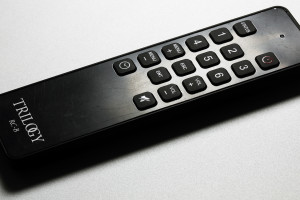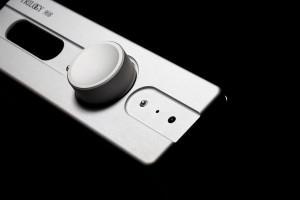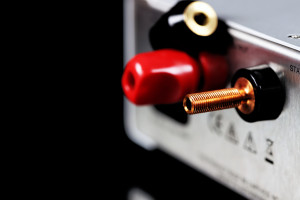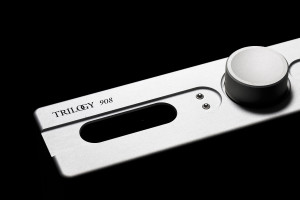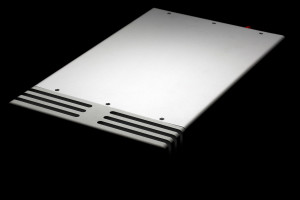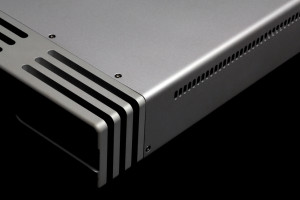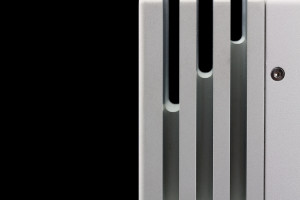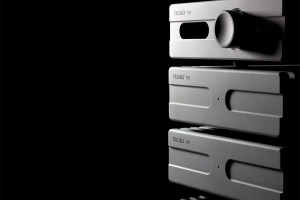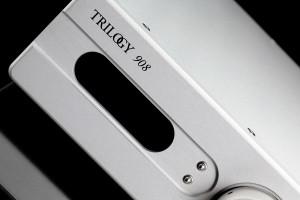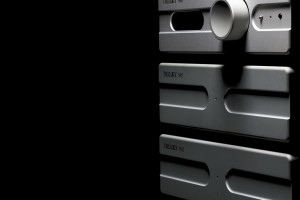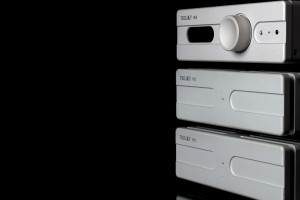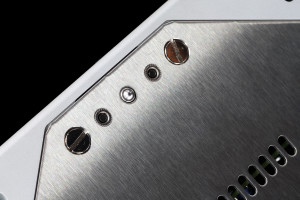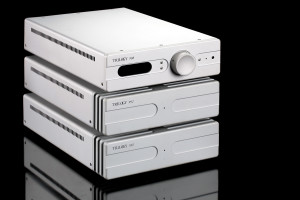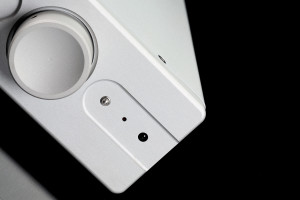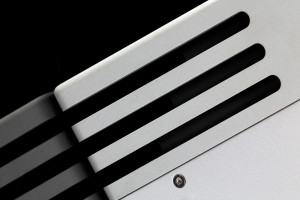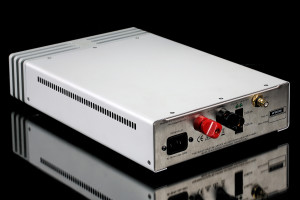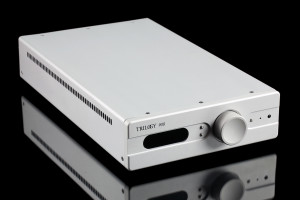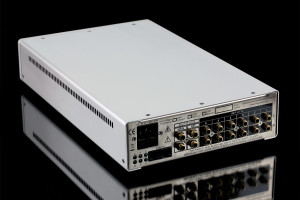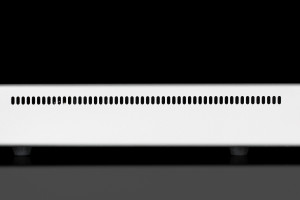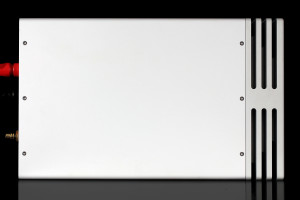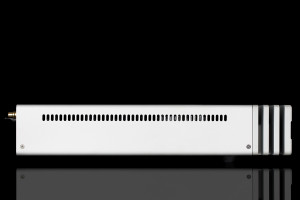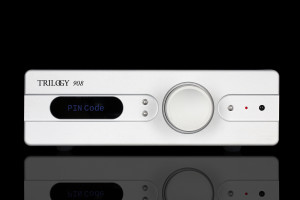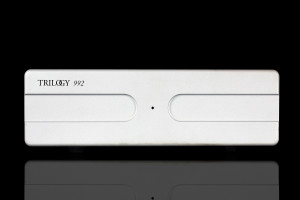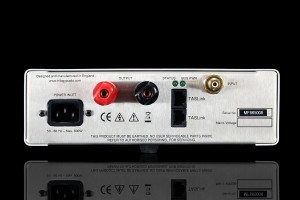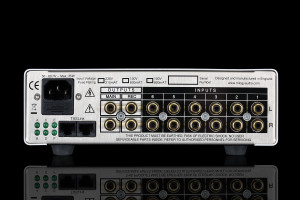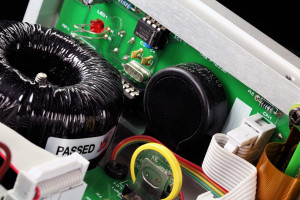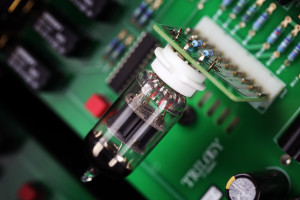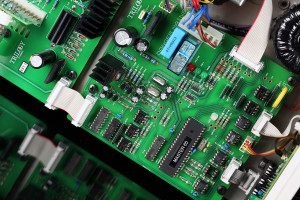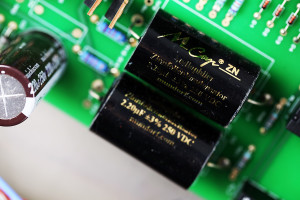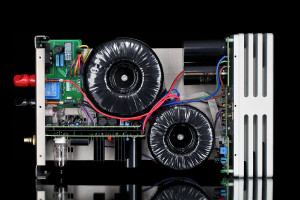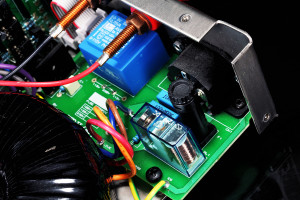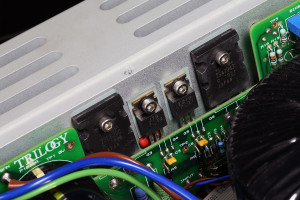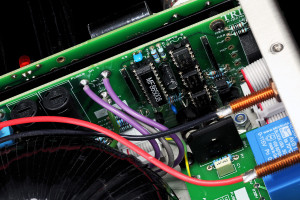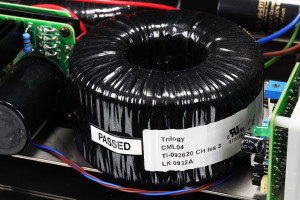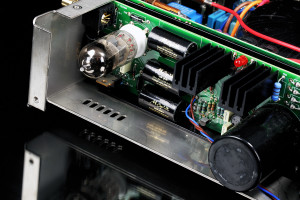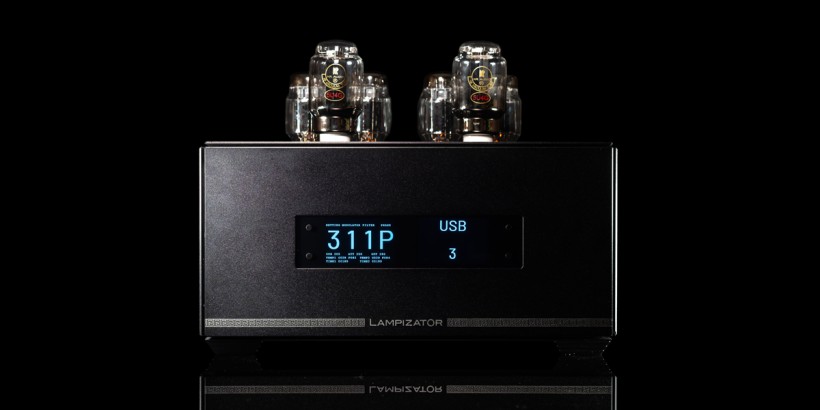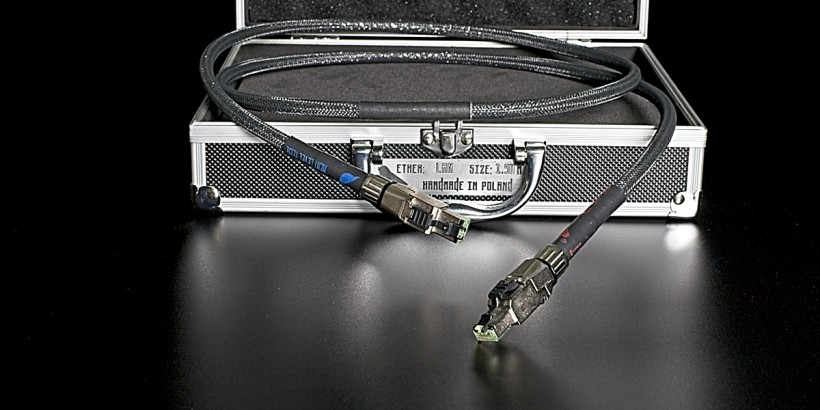Nic Poulson is the man behind well-known ISOL-8 company. Driven by a pure hobby and eager to test his power related achievements, in 1991 this English gent founded Trilogy Audio Systems. The latter company has several quite unique items in its portfolio. Small form factor and a hybrid design? Yes, please! Hence a 908/992 set is this review’s main dish. Enjoy.
Introduction
In audio, a discussion about superiority of integrated solutions over separate ones or vice versa is as fruitful as the Easter against Christmas talk, it gets us nowhere. Good integrated amplifier can make monos and a preamplifier combo blush, the opposite scenario may happen as well. Many people believe that complete power supplies and channels isolation separation is the best solution whereas others are faithful to “no cable is better than the best cable” camp. Though in the end it’s all about synergy, namely 2 + 2 outcome of 5 or more and not 4 or less. It’s just the way it is. Audiophiles often believe that if one device handles many tasks, each is done on a subpar level in comparison to product with only one on its shoulders. But three pieces setup instead of an integrated product has its own after-effects shortcomings, namely thrice the power cords and interconnects doubled. Additional socketry in a power strip or a conditioner is needed, in most cases a bigger audio rack too. Most of these necessary measures can be nasty cost generators if one is after e.g. expensive wiring. What’s more, many individuals are perfectly fine with one product with NAS/DAC/pre/amp functions, hence why to contrive overcomplicated solutions? Why Invest additional resources when at peace with the current outcome? Many listeners are simply fine with what they currently possess. Why bother then?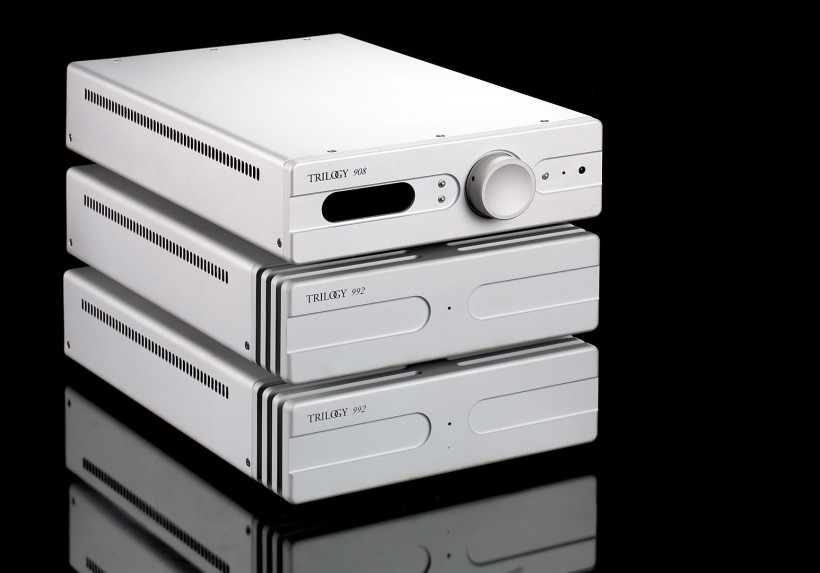 Well, not everyone in our hobby is lazy/miser/already happy/whatever. There are lots of individuals who like to experiment in audio; expand, tinker, triangulate and combine as these actions give them joy. In audio, changes which lead to constant progress are a terrific pleasure providers and that’s what this hobby is also about. Integrated devices have limited options and a listener is fated to what is already put in there. But monos? One can mix and match these with various preamplifiers to his heart’s content to name just one example. Yes, it’s about possibilities so increased cabling, spacing and expenses are acceptable trade-offs for people who simply like to experiment more than others. That’s perfectly fine as some of us simply like to have multiple choices when needed. In these regards there’s no such thing as path right and wrong, everyone picks accordingly to achieve a desired and always subjective goal.
Well, not everyone in our hobby is lazy/miser/already happy/whatever. There are lots of individuals who like to experiment in audio; expand, tinker, triangulate and combine as these actions give them joy. In audio, changes which lead to constant progress are a terrific pleasure providers and that’s what this hobby is also about. Integrated devices have limited options and a listener is fated to what is already put in there. But monos? One can mix and match these with various preamplifiers to his heart’s content to name just one example. Yes, it’s about possibilities so increased cabling, spacing and expenses are acceptable trade-offs for people who simply like to experiment more than others. That’s perfectly fine as some of us simply like to have multiple choices when needed. In these regards there’s no such thing as path right and wrong, everyone picks accordingly to achieve a desired and always subjective goal. Trilogy Audio Systems portfolio is rather modest, yet offered products are complementary. First of all, Nic isn’t into digital at all, therefore d/a converters, CD players or network streamers are off the table. He decided to focus on things he knows how to do instead, namely on amplifiers, phonostages and preamplifiers, all of which are always equipped with exceptional power supplies. A pair of 992 monaural amplifiers is priced at £4,790 (£2,395 each) whereas one has to pay £2,095 for a 908 preamplifier. This gives us £6,885 in total and… that’s a lot. Yet when main designer’s reputation and London production are considered, let alone build and sound quality, said hefty sum isn’t that shocking any more. And 908/992 set is an entry level setup in Trilogy’s offer as 990 hybrid stereo amplifier and valve based 909 preamplifier are much pricier. And there’s an 925 integrated solution, this is the real Trilogy crown jewel and Nic’s statement. 906 and 907 phonostages along with 931 and 933 headphone amps complement the portfolio. When asked about 992 and 908 origin, this English gent said that he simply likes high performance and high quality small form factor products and he sees a place on the market for these. Not to mention that this niche isn’t as crowded as other, more mainstream branches.
Trilogy Audio Systems portfolio is rather modest, yet offered products are complementary. First of all, Nic isn’t into digital at all, therefore d/a converters, CD players or network streamers are off the table. He decided to focus on things he knows how to do instead, namely on amplifiers, phonostages and preamplifiers, all of which are always equipped with exceptional power supplies. A pair of 992 monaural amplifiers is priced at £4,790 (£2,395 each) whereas one has to pay £2,095 for a 908 preamplifier. This gives us £6,885 in total and… that’s a lot. Yet when main designer’s reputation and London production are considered, let alone build and sound quality, said hefty sum isn’t that shocking any more. And 908/992 set is an entry level setup in Trilogy’s offer as 990 hybrid stereo amplifier and valve based 909 preamplifier are much pricier. And there’s an 925 integrated solution, this is the real Trilogy crown jewel and Nic’s statement. 906 and 907 phonostages along with 931 and 933 headphone amps complement the portfolio. When asked about 992 and 908 origin, this English gent said that he simply likes high performance and high quality small form factor products and he sees a place on the market for these. Not to mention that this niche isn’t as crowded as other, more mainstream branches.
Design
Trilogy 992 is a small hybrid mono amplifier of AB class operation. Therefore it’s a tubes and transistors affair in one neat looking case measuring 38,5 x 7,8 x 22 cm (D x H x W) and weighting 10 kg, which is surprisingly heavy. 992 is a visually minimalistic design, nothing flashy. The whole front is a massive, aluminium milled radiator. It’s been machined on CNC machines in a particular way that shows thick ribs. The whole case has been designed to be as resonances resilient as possible. The device gets hot very fast, yet its built to operate in such conditions without any unpleasant surprises. I had no issues with 992 after two weeks of constant work. One small diode on 992’s front indicates that device is turned on and once it starts to flash that’s a sign of overheat. Left, right and top surfaces are one piece of bent aluminium in fact, perforated on both sides whereas brushed rear plate connects with the base piece. On 992’s back there is an IEC socket, very durable Mundorf terminals and one RCA input (130 000 ohms, 2Vrms). Two green diodes and RJ45 sockets are a part of proprietary TASLink connection which enables whole Trilogy setup control with one RC. The on/off switch is placed on the device’s radiator piece. Accessible from below it’s quite difficult to use as there’s no space for fingers. Yet there’s a grand scheme behind it, I’ll explain it later on. 992 delivers 100W and 160W of power with 8- and 4-ohm loads respectively. It’s bandwidth is 10 Hz – 30 kHz (+/- 0,5 dB) and A-weighted THD is less than 1%. Maximum power consumption is about 450W.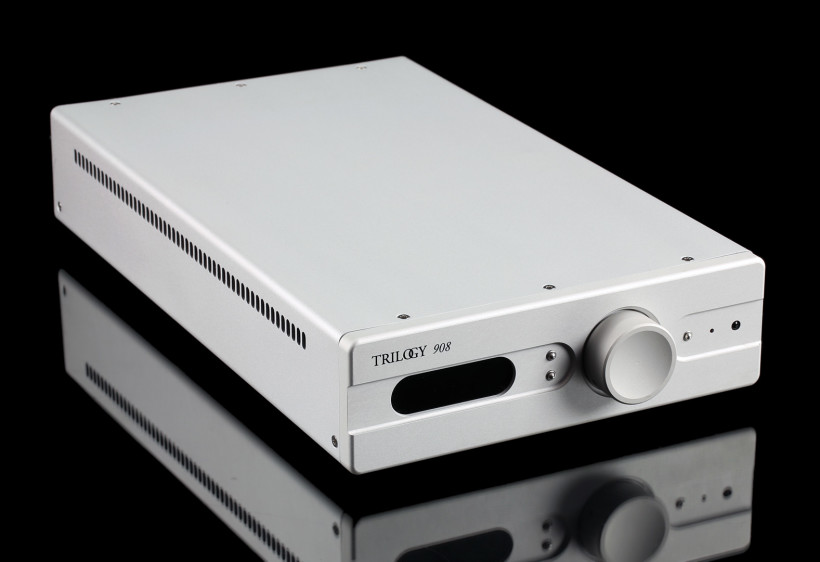 Let’s take a look at 992 innards. On separate PCB and past RCA socketry there’s an input stage which consists of a class A biased ECC88 double triode with Mundorf’s MCap series capacitors nearby. Tube component is responsible for voltage gain, it doesn’t handle current sourcing. All transistors are mounted on separate PCB and attached to aluminium radiator. There are two stages there; FET delivers first, crucial watt whereas bipolars handle the rest. Nic Poulson is the founder of ISOL-8 brand, therefore Trilogy’s trademark is a power supply and this can be seen easily in 992’s case. Interestingly, its PSU section consists of two toroidal transformers. The bigger one does the usual job whereas the smaller unit acts like a power flywheel, which smoothens out the current pulses fed to Mundorf capacitors nearby. All that is done in order to minimise electric noise. TASLink interface has its own control board.
Let’s take a look at 992 innards. On separate PCB and past RCA socketry there’s an input stage which consists of a class A biased ECC88 double triode with Mundorf’s MCap series capacitors nearby. Tube component is responsible for voltage gain, it doesn’t handle current sourcing. All transistors are mounted on separate PCB and attached to aluminium radiator. There are two stages there; FET delivers first, crucial watt whereas bipolars handle the rest. Nic Poulson is the founder of ISOL-8 brand, therefore Trilogy’s trademark is a power supply and this can be seen easily in 992’s case. Interestingly, its PSU section consists of two toroidal transformers. The bigger one does the usual job whereas the smaller unit acts like a power flywheel, which smoothens out the current pulses fed to Mundorf capacitors nearby. All that is done in order to minimise electric noise. TASLink interface has its own control board. 908 preamplifier has virtually the same dimensions as 992 monos, though it’s much lighter (3,65 vs 10 kg ). The former is also a hybrid construction and this topology isn’t too much of a surprise in its case. The device is also visually simple yet it has completely different front panel. Large and thick radiator isn’t there anymore but an aluminium plate instead with monochromatic display which shows red characters on black background. It’s legible and clear, there’s nothing to complain about. Two buttons nearby handle choice confirmation and return functions. Next there’s an amazingly convenient knob which handles both volume and menu navigation. An on/off button, operation diode and an IR receiver are mounted nearby, further to the right. 908’s side panels and top are in fact one non-magnetic aluminium “sleeve” very similar to the one used in 992 model. Trilogy’s most affordable preamplifier has quite generous rear; 6 x RCA inputs and 2 x RCA outputs should be more than enough for most people. RJ45 socketry with familiar green diodes sit nearby and IEC input is mounted a bit above these. Yes, there’s no XLR’s anywhere in sight as the unit would gain some height in the process. And Nic isn’t a fan of XLR topology in unbalanced products so that’s that. One more thing; each 992 mono amplifier has three rubber feet on its underbelly whereas four are used in 908.
908 preamplifier has virtually the same dimensions as 992 monos, though it’s much lighter (3,65 vs 10 kg ). The former is also a hybrid construction and this topology isn’t too much of a surprise in its case. The device is also visually simple yet it has completely different front panel. Large and thick radiator isn’t there anymore but an aluminium plate instead with monochromatic display which shows red characters on black background. It’s legible and clear, there’s nothing to complain about. Two buttons nearby handle choice confirmation and return functions. Next there’s an amazingly convenient knob which handles both volume and menu navigation. An on/off button, operation diode and an IR receiver are mounted nearby, further to the right. 908’s side panels and top are in fact one non-magnetic aluminium “sleeve” very similar to the one used in 992 model. Trilogy’s most affordable preamplifier has quite generous rear; 6 x RCA inputs and 2 x RCA outputs should be more than enough for most people. RJ45 socketry with familiar green diodes sit nearby and IEC input is mounted a bit above these. Yes, there’s no XLR’s anywhere in sight as the unit would gain some height in the process. And Nic isn’t a fan of XLR topology in unbalanced products so that’s that. One more thing; each 992 mono amplifier has three rubber feet on its underbelly whereas four are used in 908. Let’s take a look at 908’s guts. It’s a case of single ended class A topology with no feedback. Two rather big PCB’s are connected together via a small and tape alike interface. All sockets, their relay based switches, volume control and an analogue section are mounted on the same board in a discrete fashion. That’s a very clean and neat job. ECC88 double triode serves as an active element, Mundorf MCap series capacitors sit nearby. Microcontroller on the other PCB handles both TASLink connection interface and menu duties. Volume control on user’s side is done via shaft encoder which resembles a traditional potentiometer of great quality. But the actual volume task is executed in an analogue domain, FET and resistor based part of one of integrated circuits is involved. One shunt regulated toroidal transformer handles signal part whereas the other one serves solely as a control unit’s PSU.
Let’s take a look at 908’s guts. It’s a case of single ended class A topology with no feedback. Two rather big PCB’s are connected together via a small and tape alike interface. All sockets, their relay based switches, volume control and an analogue section are mounted on the same board in a discrete fashion. That’s a very clean and neat job. ECC88 double triode serves as an active element, Mundorf MCap series capacitors sit nearby. Microcontroller on the other PCB handles both TASLink connection interface and menu duties. Volume control on user’s side is done via shaft encoder which resembles a traditional potentiometer of great quality. But the actual volume task is executed in an analogue domain, FET and resistor based part of one of integrated circuits is involved. One shunt regulated toroidal transformer handles signal part whereas the other one serves solely as a control unit’s PSU. Trilogy devices are unique function wise. In the very beginning user is surprised as he has to input a PIN code after switching on the preamplifier. There’s no way around it as this is an anti-theft protection measure. 908 is pretty much useless without said crucial input numbers. The device’s menu is generous to say the least, it has its own clock. User can set time when whole 908+992 setup turns on and this feature obviously helps as valve based devices need some working time on them to get things right. Every input can be personalized; both gain factors and names can be set separately. There are options that allow Nic’s devices to be operational in home cinema rigs. What’s more, even time where whole setup goes to sleep mode can be set. I’ve mentioned above that it’s rather hard to get to 992’s power switch. Thing is, that in order to exploit all his functional features, 908 is needed as these devices were designed to work together, therefore be connected via proprietary TASLink interface. Once this is done, there’s no need to use inconvenient button on 992’s underbelly as turning on 908 will make all three products operational in a jiffy. Logical, isn’t it? But that’s not the whole story. If something bad happens to components paired with the preamplifier, the latter will inform user about any problems. Lastly, once switched on, all three products need a minute or so to be operational.
Trilogy devices are unique function wise. In the very beginning user is surprised as he has to input a PIN code after switching on the preamplifier. There’s no way around it as this is an anti-theft protection measure. 908 is pretty much useless without said crucial input numbers. The device’s menu is generous to say the least, it has its own clock. User can set time when whole 908+992 setup turns on and this feature obviously helps as valve based devices need some working time on them to get things right. Every input can be personalized; both gain factors and names can be set separately. There are options that allow Nic’s devices to be operational in home cinema rigs. What’s more, even time where whole setup goes to sleep mode can be set. I’ve mentioned above that it’s rather hard to get to 992’s power switch. Thing is, that in order to exploit all his functional features, 908 is needed as these devices were designed to work together, therefore be connected via proprietary TASLink interface. Once this is done, there’s no need to use inconvenient button on 992’s underbelly as turning on 908 will make all three products operational in a jiffy. Logical, isn’t it? But that’s not the whole story. If something bad happens to components paired with the preamplifier, the latter will inform user about any problems. Lastly, once switched on, all three products need a minute or so to be operational.
Listening
In a case of English products several things were worth checking out. The very first one was to find out how 908 would fare against LampizatOr’s Level7 TAIV VC-03 volume control module. That was the starting point and things moved from there. In short, with 908 setup performs in a sweeter way than without it, but that’s merely a fracture of the whole story. Volume module in Polish device makes things more stiff and a bit more clear, with slightly elevated yet not as smooth treble. Saturation isn’t as generous as well, which was to be expected. LampizatOr Level7 also brings midrange a bit forward and makes it more direct in the process. In this scenario instruments contouring is also elevated and the same story goes with the treble. All these changes are fairly small separately, yet quite audible all together. Level7’s volume regulation has more detail oriented character. Though 908 isn’t lacking in this regard and what it brings to the table against module mounted in Polish DAC is greater smoothness and a bit bigger soundstage. Since it doesn’t put any emphasis on the treble, things are both more even all around and delicate, gentler whereas Lampizator’s volume module makes performance more direct. It can be said that these two approaches are quite different yet of similar quality. Subjectively I preferred 908’s input.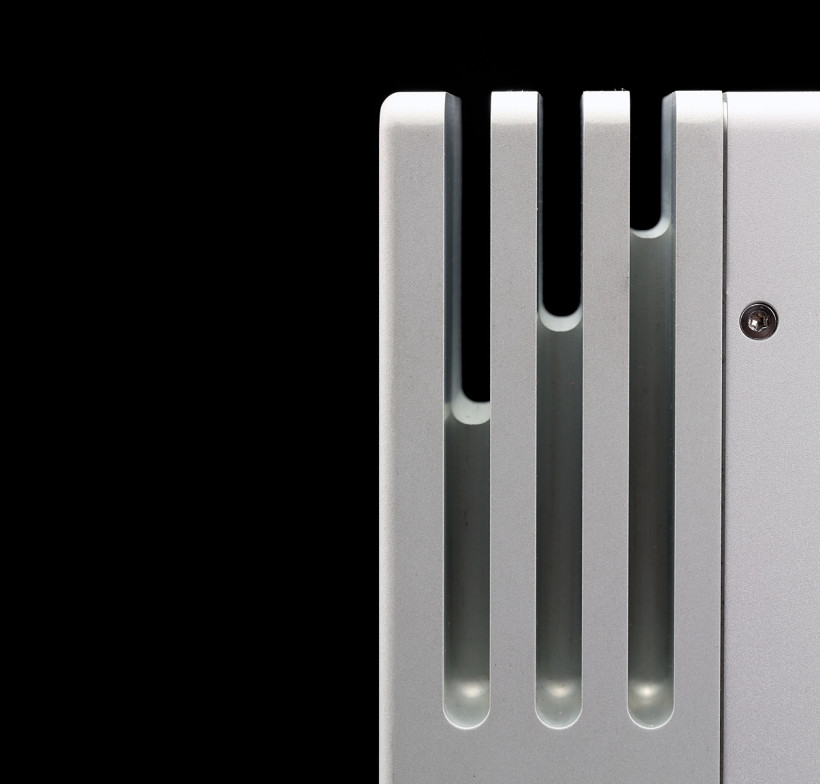 I highly valued 908’s input to the sound of speakers used during the test. KEF LS50 is forceful but English preamp was easily able to tame its feisty nature. Things got smoother, more saturated, calmer and quite enjoyable in the end. Yes, resolution suffered a bit. But what’s left in that regard will be plenty for most people, yours truly included. Let me elaborate. Once small amount of resolution is taken away from said detail oriented speakers but musicality is granted instead, that’s an obvious improvement right there. Unless one is into details no matter what whereas tonal balance, saturation and other pleasant things are far in the back on his/hers priorities list.
I highly valued 908’s input to the sound of speakers used during the test. KEF LS50 is forceful but English preamp was easily able to tame its feisty nature. Things got smoother, more saturated, calmer and quite enjoyable in the end. Yes, resolution suffered a bit. But what’s left in that regard will be plenty for most people, yours truly included. Let me elaborate. Once small amount of resolution is taken away from said detail oriented speakers but musicality is granted instead, that’s an obvious improvement right there. Unless one is into details no matter what whereas tonal balance, saturation and other pleasant things are far in the back on his/hers priorities list.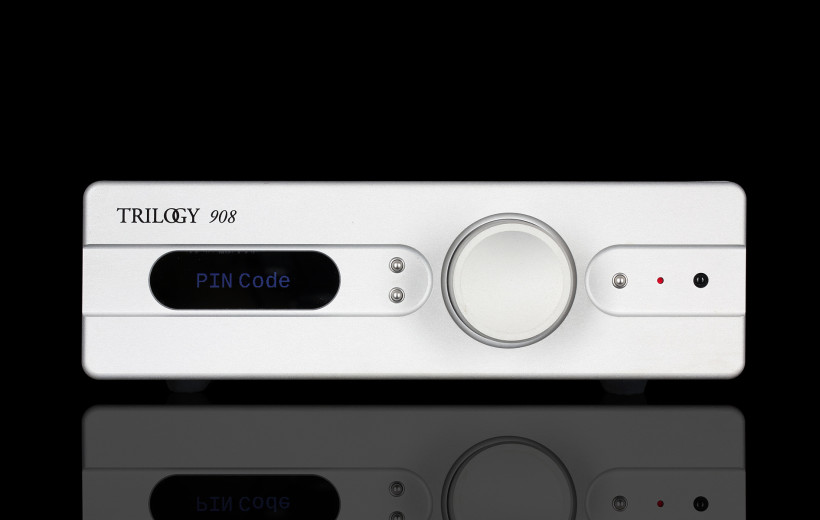 Moving on, 6.0 model from Finnish Gradient company enjoyed 908’s company as well, as it’s also a detail oriented performer, yet it undoubtedly handles music in a more refined way. What’s surprising is that 6.0 has a tons of details all over the place yet it is able to show these in a coherent fashion with its other strong features; complex soundstaging, effortlessness and marvelous bass. Once 908 comes into play, things slow down just a tiny bit and lowest octaves’ grip is somewhat looser. Yet smoothness increases, naturalness as well. After this experience I have to admit that English and Finnish pairing was a very good one.
Moving on, 6.0 model from Finnish Gradient company enjoyed 908’s company as well, as it’s also a detail oriented performer, yet it undoubtedly handles music in a more refined way. What’s surprising is that 6.0 has a tons of details all over the place yet it is able to show these in a coherent fashion with its other strong features; complex soundstaging, effortlessness and marvelous bass. Once 908 comes into play, things slow down just a tiny bit and lowest octaves’ grip is somewhat looser. Yet smoothness increases, naturalness as well. After this experience I have to admit that English and Finnish pairing was a very good one.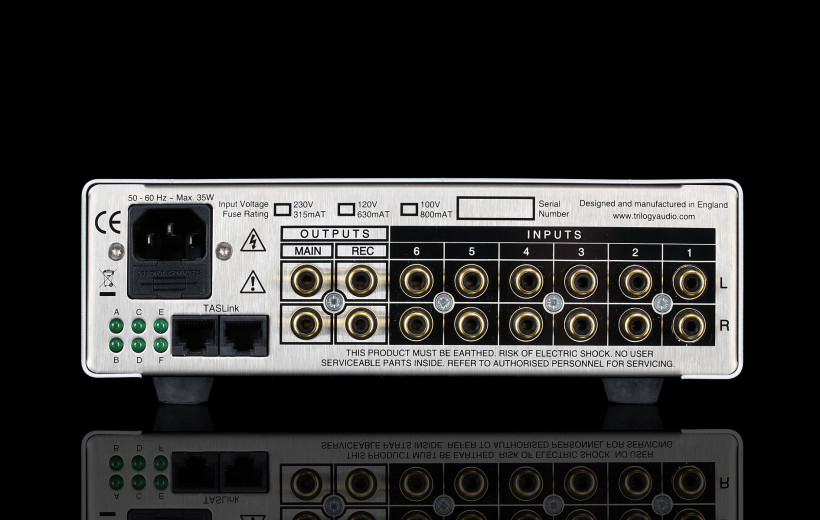 Having an overview on what 908 brings to the table, next step involved English three-piece set to Hegel’s H160 integrated device comparison. In order to get things as even and fair as possible, Norwegian product acted as a stereo power amplifier and preamplifier (which indicates that its DAC was bypassed) whereas LampizatOr served as a source only. Its volume control was set to max. Forza AudioWorks Noir RCA IC’s and Harmonix X-DC2F power cords were used during said test.
Having an overview on what 908 brings to the table, next step involved English three-piece set to Hegel’s H160 integrated device comparison. In order to get things as even and fair as possible, Norwegian product acted as a stereo power amplifier and preamplifier (which indicates that its DAC was bypassed) whereas LampizatOr served as a source only. Its volume control was set to max. Forza AudioWorks Noir RCA IC’s and Harmonix X-DC2F power cords were used during said test.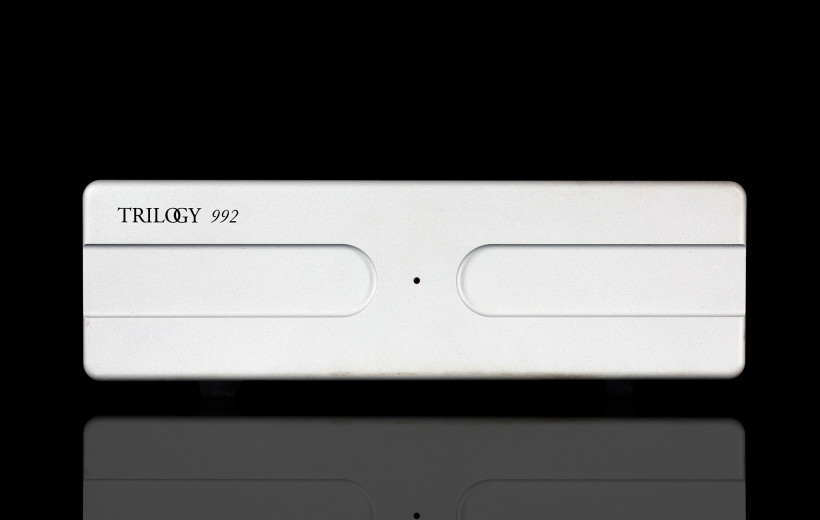 The outcome of English versus Norwegian skirmish was fairly easy to predict. In short, H160 handles things in a neutral, quite punchy and texture wise frugal way. It has some safe amount of musicality inside, therefore to describe it suddenly as a lifeless or dull performer would be untrue. Moving on, Nic Poulson has his own vision, he makes specific sounding machines; highly analogue alike, quite warm and simply enjoyable. There are many devices tuned to perform in such way. But in case of Trilogy there’s always a twist somewhere. High saturation, density and texturing aspects aside, these are also very detailed, lively and transparent. To make it short, Nic’s products take what’s best from tubes yet most of transistor alike features are also heard whereas greatly elevated vividness and smoothness serves as a tasty cherry on top. Such set of features is very rare in our hobby and Nic knows exactly how to pull this off. 992 and 908 combo sounds exactly like that. To a point where if someone is familiar with what said English gent does, there’s a fair chance that he’ll recognize his application without the need to look at what’s placed on an audio rack. A case of proprietary sound signature then? Quite, both very strong and recognizable one at that.
The outcome of English versus Norwegian skirmish was fairly easy to predict. In short, H160 handles things in a neutral, quite punchy and texture wise frugal way. It has some safe amount of musicality inside, therefore to describe it suddenly as a lifeless or dull performer would be untrue. Moving on, Nic Poulson has his own vision, he makes specific sounding machines; highly analogue alike, quite warm and simply enjoyable. There are many devices tuned to perform in such way. But in case of Trilogy there’s always a twist somewhere. High saturation, density and texturing aspects aside, these are also very detailed, lively and transparent. To make it short, Nic’s products take what’s best from tubes yet most of transistor alike features are also heard whereas greatly elevated vividness and smoothness serves as a tasty cherry on top. Such set of features is very rare in our hobby and Nic knows exactly how to pull this off. 992 and 908 combo sounds exactly like that. To a point where if someone is familiar with what said English gent does, there’s a fair chance that he’ll recognize his application without the need to look at what’s placed on an audio rack. A case of proprietary sound signature then? Quite, both very strong and recognizable one at that. Hegel H160 equipped setup performed in a more contour and sharper fashion. This could be heard right off the bat. After Norwegian to English switch things got calmer, rounder and denser. Yet dynamics remained at the same high level. All nuances present with H160 were also there past said change and as equally easily audible. This kind of sound was very involving and pleasant as 908 and 992 combo handled music gently and in an effortless way. This wasn’t a case of feisty and overly direct performance, no sir. Peace, order, density, coherence and precision were present instead. Practice often shows that Nic’s products do not hide anything and despite roundness are very transparent. After a fair amount of time spent with Queen’s DSD material it was very hard to get back to their PCM equivalents. Something simply wasn’t there anymore. Yes, LampizatOr’s DAC got the job done right yet Trilogy’s equipment wasn’t a bottlenecking factor. Far from it, hybrid devices simply adjusted to DSD status quo and played along. What’s more, any kind of dullness or slowness wasn’t a part of the whole. My point is that the ability to combine musicality with great detailing and speed is a rarity to hear.
Hegel H160 equipped setup performed in a more contour and sharper fashion. This could be heard right off the bat. After Norwegian to English switch things got calmer, rounder and denser. Yet dynamics remained at the same high level. All nuances present with H160 were also there past said change and as equally easily audible. This kind of sound was very involving and pleasant as 908 and 992 combo handled music gently and in an effortless way. This wasn’t a case of feisty and overly direct performance, no sir. Peace, order, density, coherence and precision were present instead. Practice often shows that Nic’s products do not hide anything and despite roundness are very transparent. After a fair amount of time spent with Queen’s DSD material it was very hard to get back to their PCM equivalents. Something simply wasn’t there anymore. Yes, LampizatOr’s DAC got the job done right yet Trilogy’s equipment wasn’t a bottlenecking factor. Far from it, hybrid devices simply adjusted to DSD status quo and played along. What’s more, any kind of dullness or slowness wasn’t a part of the whole. My point is that the ability to combine musicality with great detailing and speed is a rarity to hear.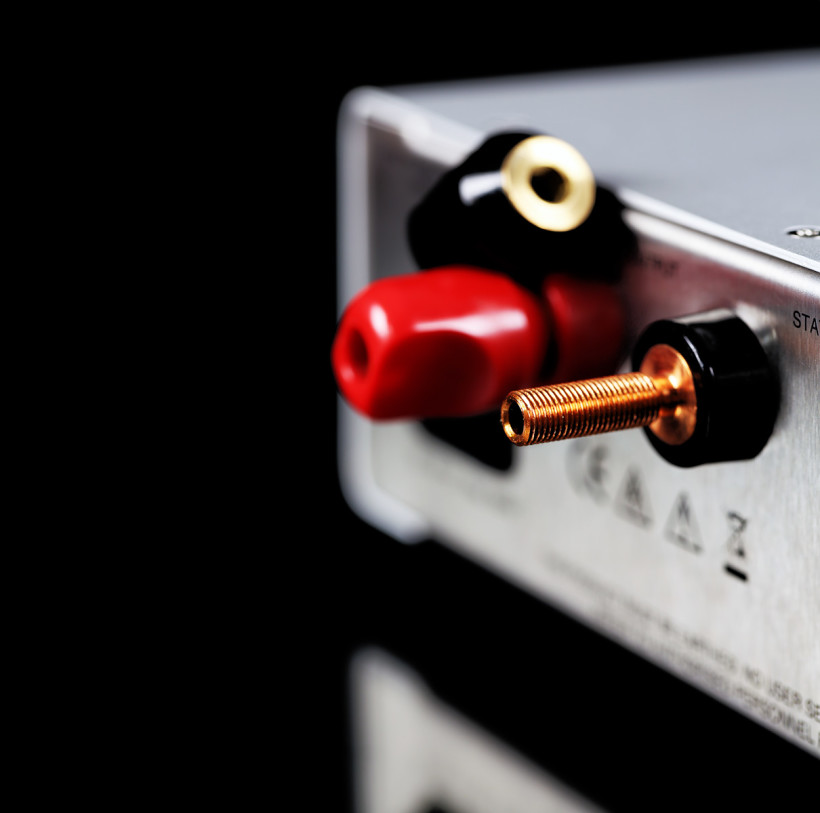 One could write that Trilogy setup delivers musical picture in a greatly different fashion than it’s Norwegian opponent and consider the case closed. To a degree that’s the truth. Yet when all impressions are put together, after switch from former system to latter things become audibly flatter whereas considerable amount of vividness is also gone. And that’s the money difference right there as there are some things H160 simply isn’t able to do and it goes beyond mere peaks and dips on the frequency range. This Norwegian integrated, though a great device overall, has no edge over Trilogy setup in any regard I could think of. Lastly, English products do soundstage scaling better as well but in a rather unobvious way. Let me explain. Both rigs paint similarly large picture in terms of width and depth, so there’s no difference, right? Wrong. Music isn’t about getting it constantly big and that’s often the case with H160. Trilogy is surprising in that regard as it usually treats its listener in a refined and peaceful fashion, dare I say realistic one in terms of scale and punchness. Yet when needed, it delivers it impressively big and with proper momentum, but the key here is the recording itself. If grand events are a part of it, Nic’s trio will do these more justice than its competitor. This leads to a greater transparency and a less showy attitude former three-piece set represents and such an refined approach has its own value.
One could write that Trilogy setup delivers musical picture in a greatly different fashion than it’s Norwegian opponent and consider the case closed. To a degree that’s the truth. Yet when all impressions are put together, after switch from former system to latter things become audibly flatter whereas considerable amount of vividness is also gone. And that’s the money difference right there as there are some things H160 simply isn’t able to do and it goes beyond mere peaks and dips on the frequency range. This Norwegian integrated, though a great device overall, has no edge over Trilogy setup in any regard I could think of. Lastly, English products do soundstage scaling better as well but in a rather unobvious way. Let me explain. Both rigs paint similarly large picture in terms of width and depth, so there’s no difference, right? Wrong. Music isn’t about getting it constantly big and that’s often the case with H160. Trilogy is surprising in that regard as it usually treats its listener in a refined and peaceful fashion, dare I say realistic one in terms of scale and punchness. Yet when needed, it delivers it impressively big and with proper momentum, but the key here is the recording itself. If grand events are a part of it, Nic’s trio will do these more justice than its competitor. This leads to a greater transparency and a less showy attitude former three-piece set represents and such an refined approach has its own value.
Summary
Comparisons such as one above might seem as unjust considering thrice the expense in a case of Nic’s products. But this kind of scheme allowed me to find out what would happen once someone decides to take English path instead of more affordable Norwegian one. After all it is often said that the law of diminishing returns can stab an audio enthusiast where it hurts the most. But this time changes were of a big quality calibre. Trilogy devices performed in a very particular, refined and familiar way I’ve previously heard in cases of 931 and 933 headphone amplifiers from the very same manufacturer.
Nic Poulson’s work is very interesting on many levels and that’s to be expected of someone with such highly advanced technical background. Therefore instead of ordinary products, in 908 and 992 cases one gets technically elaborate and unique devices equipped with smoothness, density and vividness beyond Norwegian integrated’s reach. Detailing and spaciousness are top notch as well yet without claustrophobia or torpor. In addition, organic and effortless sound Trilogy flock delivers is an easygoing one as well. After more than a month of extensive testing I know that 908 and 992 combo was designed to be musical and relaxing on top of all things, yet it’s highly transparent too. Hegel H160 defends itself, please don’t get me wrong. Yet, it simply won’t do certain things or not to a degree its competitor is able to, therefore is a lower league performer if someone asks me.
Nic Poulson consequently hooks up listeners with his own sound signature. He favors the same aspects and after familiarizing myself with four of his products, I’m quite confident that this is no random outcome but a meticulously realized plan. His jewel alike products sit on an uncrowded shelf; too expensive not to be treated seriously and too tiny and standing out of the ordinary not to be at least a bit intriguing. Which brings us to the conclusion that 908 and 992 combo has been made for a very particular customer who’s after something different than most people. It’s highly probable that the individual of this sort will not only pay his attention but also fully admire and appreciate what Nic Poulson has achieved. And rightfully so as 908/992 marriage not only looks and feels but also performs great. This kind of refined sound makes transistors and tubes as one in an exceptionally pleasant fashion. Therefore I strongly encourage every aficionado of such form and sound signature to take interest in Trilogy’s offering. Simple as that.
Truth be told, for the 908 and 992 cost, lots of things can be achieved in this hobby and to witness what kind of value said setup represents, it obviously should be compared to products placed on similar or higher shelves. Sadly I have no intel on how it’d fare exactly against such competition. But I strongly believe that English versus Norwegian skirmish shed some light on the performance matter and got certain individuals properly interested. ‘Till next time.
Associated equipment:
- Loudspeakers: KEF LS50, Gradient 6.0
- Amplifiers: Hegel H160
- Digital sources: Psvane WE101D-L loaded Lampizator Level7
- Interconnects: Forza AudioWorks Noir
- Speaker cable: Forza AudioWorks Noir Concept
- Power chords: Forza AudioWorks Noir Concept, Harmonix X-DC2F, Gigawatt LC-2 MK2
- Power delivery: Gigawatt PF-2 mk2
- Equipment racks: Lavardin K-Rak
Retail prices of reviewed components in EU:
- Trilogy 992: £4,790/pr
- Trilogy 908: £2,095
Manufacturer: Trilogy Audio Systems



